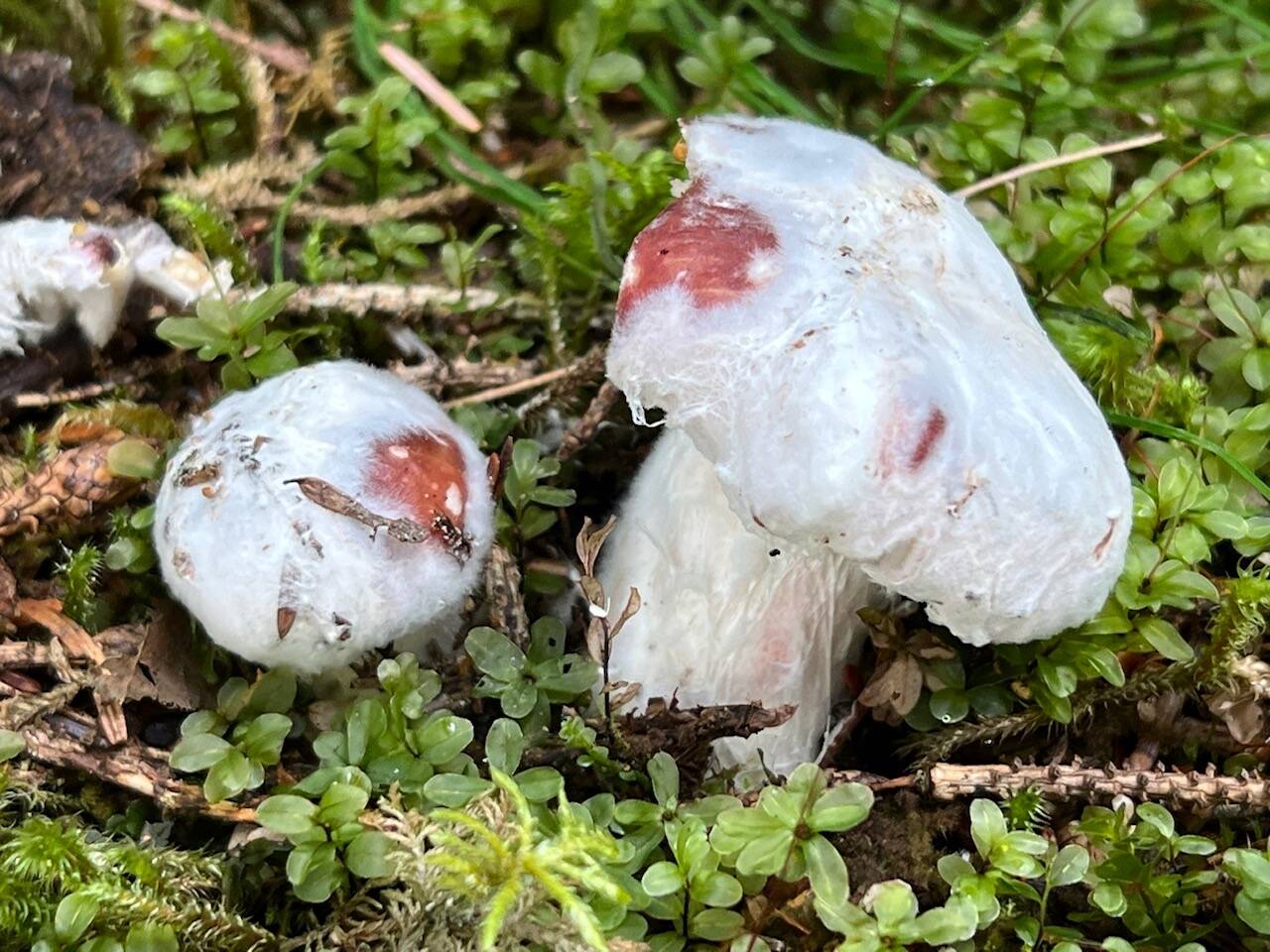It’s been a good fall for mushrooms and other fungi; the trail-sides have been decorated with a variety of forms and colors. One day, on the Horse Tram Trail, I noticed a beautiful fungus on tree, a species of Pholiota (known as scaly-caps), probably the golden-fleece scaly-cap. It’s a wood-rotting saprophyte. Several days later, those golden caps had matured, opened, and turned gray. Most of the rest of the fungi have now deteriorated into messy lumps, but it was good while it lasted.
Some sharp-eyed hikers called attention to some strange-looking mushrooms that most of us have never noticed at all. These turned out to be not one but two different fungi in close association. A local mycophile identified one of the fungal participants as a species of Hypomyces. The many members of that genus are parasitic on other mushrooms, growing over the surface of the host, changing the surface color (to red or green or yellow or…), sometimes changing the shape of the host and even preventing the mushroom cap from opening for spore dispersal. The parasite sends filamentous hyphae into the body of the host and extracts nutrients.
Each species of Hypomyces parasitizes just certain kinds of fungi—some on Amanita, some on Russula, some on Helvella, and so on. Many, perhaps most, of the hosts are mycorrhizal, forming mutualistic connections to various plant species and often connecting one plant, of the same or different species, to another. Those connections move materials among all the participants. When the parasites tap into those connections, it opens up the possibility that some nutrients from plants might end up in Hypomyces—which thus might be indirectly parasitic on plants. This adds a whole ‘nother layer of complexity to existing connections.
Of course, there are lots of questions to be asked about these complexities. Could the parasite, by drawing nutrients from the mutualistic host fungus, perhaps increase the movement of nutrients from the plants? How does that possibility affect the mutualism? Do the species of plants connected to the host fungus have an effect on growth and reproductive success of either the host or its parasite? Hmmm, the ecology of Hypomyces is rife with unanswered questions!
In early September, a cheery little roadside plant was still flowering. It’s called eyebright, for its medicinal applications, and belongs to the genus Euphrasia.
When I tried to look for more information about this genus, I found that the taxonomic complexities daunting. There are many species in the genus; they often hybridize and populations have evolved in different directions rather rapidly. Furthermore, the genus (with its many relatives such as paintbrush, lousewort, yellow rattle) has been transferred from one taxonomic family (Scrophulariaceae) to another (Orobranchaceae). So we need to update our field guides!
Like its just-named relatives, eyebright is hemiparasitic. It has green leaves and can photosynthesize its own energy-yielding sugars but it also makes connections between its roots and the roots of various host plants, often grasses and other herbaceous species. The host plant can affect the size and the time of flowering of eyebright, and perhaps other aspects of its life history.
Our local species is known as Euphrasia arctica. It’s a tetraploid (with twice the usual amount of DNA in its nuclei), so it may have originated as a hybrid. An annual, it often colonizes roadsides and other disturbed sites. The little white flowers are probably self-compatible but potentially out-crossing. The flowers may be visited by insects, but I’ve seen little visitation on the plants I’ve looked at. The fruit is a small capsule, with many tiny wind-dispersed seeds.
Thanks to Jenifer Shapland for identifying the fungi.
• Mary F. Willson is a retired professor of ecology. “On the Trails” appears every Wednesday in the Juneau Empire.

